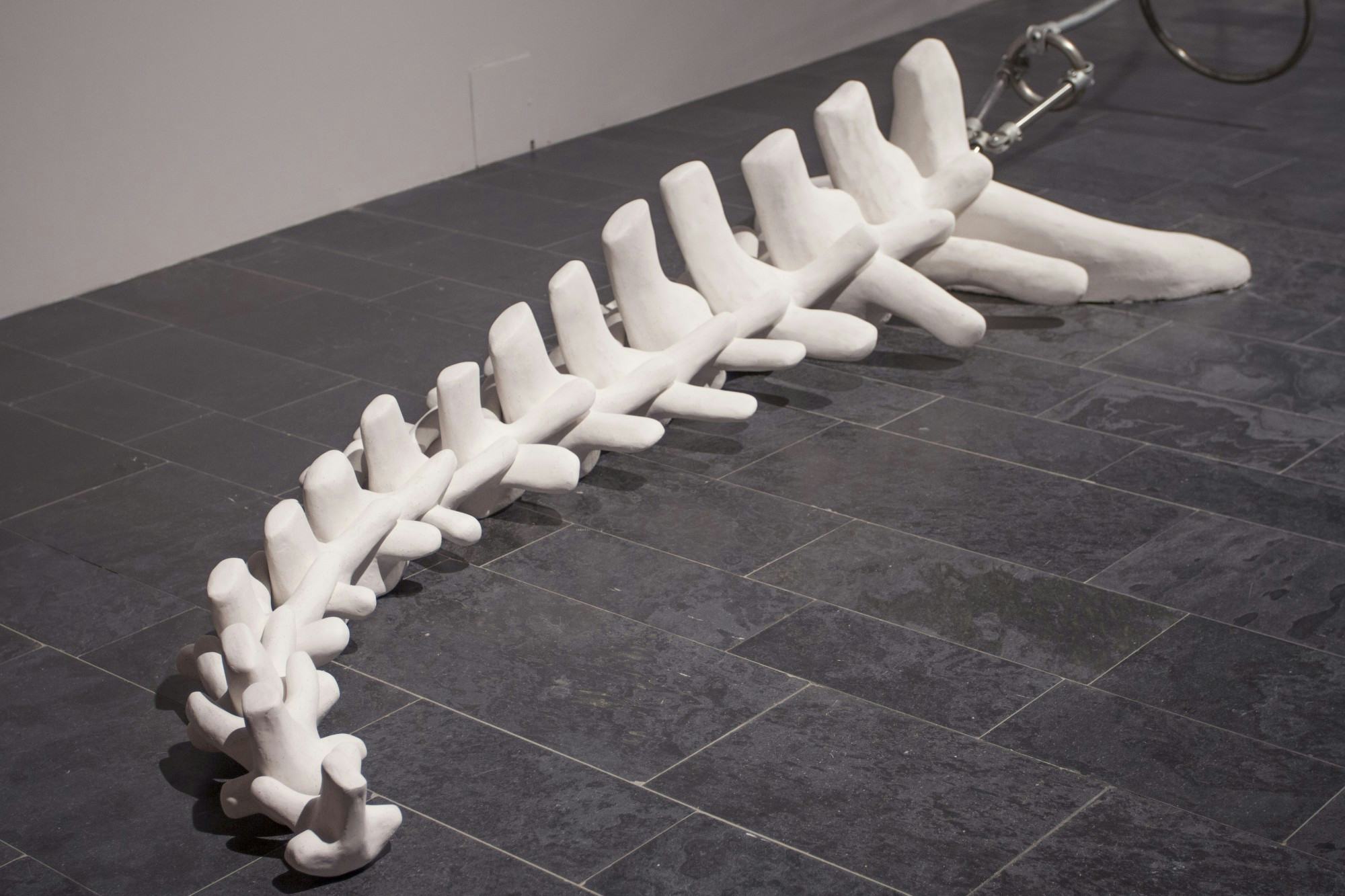LB°24 — Participants
Erik Thörnqvist (b. 1994, Umeå) is an artist based in Stockholm and Luleå.
Norrbottens museum
Big Science, Small Country, 2020
8mm film, stereo sound.
Steel, concrete, granite, quartz, slate, till, polyester, pigment, stuffed snowy owl
Erik Thörnqvist works with various fictional, historical, collective and personal references to explore affective states, labour and how bodies define space. His work is time based as well as spatial – a fictional and experience-based universe that only emerges gradually. Through an encyclopaedic yet quasi-scientific approach, Thörnqvist’s installations explore concepts such as authenticity and objectivity. For the biennial, he has produced the new works, Cartesian Crawler, on view at Luleå konsthall, and Big Science, Small Country at Norbotten’s Museum. Further works are part of the display at the Silver Museum in Arjeplog. In the installation Big Science, Small Country, Thörnqvist revisits the evacuation route his grandfather helped construct as part of the Esrange Space Center in the 1960s. North of Övre Soppero, o the E45 motorway, this gravel road extends even further into remoteness towards “Crash-zone B”, the area where possible space debris was intended to crash, disregarding the Sami villages located there for the winter.
Through his grandfather’s gaze, Thörnqvist portrays an infrastructural project implicated both in the arms race of the Cold War, and in the wider project of earthly as well as planetary expansion. The work asks questions about the existential consequences that follow in the wake of technological progress.
Sound: Robin Rådenman
8mm film: Karl-Erik Thörnqvist
The work is produced in collaboration with the Resource Centre for Art and Swedish Lapland AiR.
Luleå konsthall
Cartesian Crawler, 2020
Stainless steel, galvanized steel, natural plaster, polyester
This cartesian crawler is a fabulous creature, a phantom that originates from and is generated in Crash-zone B. It can move freely over the horizontal x and the vertical y-axis; it is an agent of the in-between. The sculpture copies the dimensions of the shelters that line the road in Crash-zone B (that is discussed in Thörnqvist’s installation at Norrbotten’s museum). Cartesian Crawler’s presence stirs a number of complex and political issues related to place, cultural heritage, colonialism and acceleration. The freewheeling exponential growth of our time, whereby we live in constant oscillation between utopia and dystopia, resemble classical and religious notions of history as steering towards inevitable catastrophe and extinction. Perhaps the crawling and clambering will pave the way for a different reality altogether.
Silver Museum
What is the sun called?, 2020
Print on MDF
Have you seen the sun?, 2020
Print on MDF
Aesculapian snake, 2019
Polyester, jesmonite, plaster, concrete,
steel, acrylic, lacquer
Froben’s hand, 2019
Plaster, pigment
Sun, 2019
Corn starch, acrylic
Sampo, 2019
Steel, jesmonite, plaster, acrylic, bronze powder, laser engraved birch veneer
What makes us want to look beyond the stratosphere, dig deeper into the earth, program technology that are outside of our own comprehension, or even allow us to turn our backs on reality? The installation Sampo is based on the metallurgical catalogue De re metallica written by Georgius Agricolae and published in 1556. The book is one of the earliest accounts of the various stages of mining and remained the most authoritative text on the subject for almost 180 years after its publication. An image of an 18th century coin in the shape of a cogwheel found in Luleå, as well as the aesculapian snake, that appears on the title page of De re metallica are also included in Thörnqvist’s sculpture to invoke the intimate relations between nature, technology, mysticism and science.
Erik Thörnqvist (b. 1994, Umeå) is an artist based in Stockholm and Luleå.
Work
Cartesian Crawler, 2020
Stainless steel, galvanized steel, natural plaster, mink fur, polyester
Location
Luleå konsthall
21.11–14.2
Work
Big Science, Small Country, 2020
8mm film, stereo sound.
Steel, concrete, granite, quartz, slate, till, polyester, pigment, stuffed snowy owl
Sound: Robin Rådenman
8mm film: Karl-Erik Thörnqvist
Location
Norrbottens Museum, Luleå
21.11–14.2
Work
What is the sun called?, 2020
Print on MDF
Have you seen the sun?, 2020
Print on MDF
Aesculapian snake, 2019
Polyester, jesmonite, plaster, concrete,
steel, acrylic, lacquer
Froben’s hand, 2019
Plaster, pigment
Sun, 2019
Corn starch, acrylic
Sampo, 2019
Steel, jesmonite, plaster, acrylic, bronze powder, laser engraved birch veneer
Location
The Silver Museum
21.11–14.2
